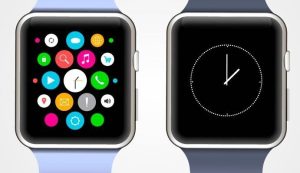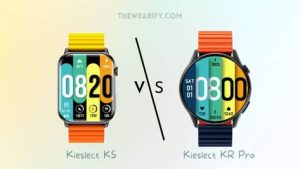Uncategorized
The Evolution of Smartwatches: What’s Next?
Smartwatches have come a long way from being simple digital watches with basic functionality to sophisticated devices that combine the best of wearable technology, health tracking, and connectivity. As technology continues to advance, the future of smartwatches promises even greater innovation, integration, and impact on our daily lives. At 360bestelitend.com, we explore the journey of smartwatches, the key milestones in their development, and what the next generation of smartwatches might bring.
1. The Beginnings: From Digital Watches to Early Smart Devices
The concept of smartwatches began with digital watches in the late 20th century, which introduced features beyond just telling time.
Key Milestones in the Early Days:
- 1972: The Pulsar Time Computer by Hamilton
- The first digital watch, featuring an LED display and basic functions like a stopwatch.
- 1980s: Calculator Watches
- Brands like Casio popularized watches with calculators and basic data storage, appealing to tech enthusiasts.
- 1998: Seiko’s Ruputer
- One of the first wearable computers, capable of running small programs, marking a precursor to modern smartwatches.
While these early devices laid the groundwork, they lacked the connectivity and functionality that define smartwatches today.
2. The Rise of Connected Watches

The 2000s marked the transition from standalone digital watches to connected smart devices.
Key Innovations:
- 2004: Microsoft SPOT Watches
- Microsoft introduced SPOT (Smart Personal Object Technology), which delivered news, weather, and calendar updates via FM radio signals. Despite limited success, SPOT watches paved the way for integrating connectivity into wearables.
- 2009: Samsung S9110 Watch Phone
- Samsung launched one of the first watch phones with calling capabilities and a touchscreen interface.
These early connected watches laid the foundation for the smartwatch revolution by combining functionality with connectivity.
3. The Modern Era: Smartwatches Redefined
The modern smartwatch era began in the early 2010s, driven by advances in smartphones and wearable technology.
Key Milestones:
- 2013: Pebble Smartwatch
- Pebble was a game-changer, featuring customizable watch faces, fitness tracking, and smartphone notifications. It gained massive popularity through crowdfunding.
- 2014: Android Wear (now Wear OS)
- Google launched Android Wear, providing a platform for smartwatches with seamless integration into the Android ecosystem.
- 2015: Apple Watch
- Apple redefined the smartwatch category with a sleek design, fitness tracking, and app support. The Apple Watch quickly became a market leader, introducing features like the Digital Crown and health monitoring tools.
4. Current Trends in Smartwatches
Today’s smartwatches are powerful devices that combine advanced technology with sleek designs. Some of the current trends shaping the smartwatch industry include:
1. Health and Fitness Tracking
- Smartwatches now include heart rate monitoring, ECG, blood oxygen tracking, and even stress level analysis.
- Devices like the Apple Watch and Garmin watches have revolutionized health tracking, offering tools for fitness enthusiasts and medical monitoring.
2. Advanced Connectivity
- LTE-enabled smartwatches allow users to make calls, send messages, and stream music without needing a smartphone nearby.
- Integration with voice assistants like Siri, Google Assistant, and Alexa enhances user convenience.
3. Stylish and Customizable Designs
- Manufacturers now prioritize aesthetics, offering customizable watch faces, straps, and premium materials like titanium and ceramic.
4. Extended Battery Life
- Improvements in battery technology have allowed watches like the Fitbit Versa and Garmin Fenix to offer multi-day battery life.
5. Smartwatch Ecosystems
- Smartwatches are now central to broader ecosystems, syncing seamlessly with other devices like smartphones, headphones, and smart home systems.
5. Challenges and Limitations
Despite their impressive features, smartwatches face several challenges:
- Battery Life: Many smartwatches still struggle to last more than a day or two on a single charge.
- Size Constraints: Adding new features while maintaining a sleek and comfortable design remains a challenge.
- Price: High-end smartwatches can be expensive, limiting their accessibility to a broader audience.
- Dependence on Smartphones: Many smartwatches still require a smartphone for full functionality, reducing their standalone value.
6. What’s Next for Smartwatches?
The future of smartwatches promises groundbreaking innovations that will further integrate these devices into our lives.
1. Enhanced Health Monitoring
- Non-Invasive Glucose Monitoring: Companies like Apple and Fitbit are reportedly working on technology to measure blood sugar levels without a needle, which could revolutionize diabetes management.
- Blood Pressure Monitoring: Some brands have already introduced preliminary blood pressure tracking, with more accurate and widespread adoption expected in the future.
2. AI Integration
- Smartwatches are likely to leverage AI for personalized health insights, advanced voice assistants, and predictive features based on user behavior.
3. Augmented Reality (AR) Features
- Future smartwatches may integrate AR for navigation, workouts, and gaming, projecting visuals onto the watch face or connected devices.
4. Energy Efficiency and Battery Life
- Advancements in solar charging and low-power processors could extend battery life significantly, allowing for weeks of use without recharging.
5. Fashion Meets Tech
- Partnerships between tech companies and luxury brands will likely grow, offering premium smartwatches that combine cutting-edge technology with high-end design.
6. Wearable Ecosystems
- Smartwatches will increasingly integrate with other wearables, like smart glasses and fitness trackers, to create a seamless connected experience.
7. Sustainability
- Eco-friendly materials and recyclable components are expected to play a bigger role as brands prioritize sustainability.
8. Advanced Security Features
- Future smartwatches may include biometric authentication methods like fingerprint scanners or improved facial recognition for enhanced security.
7. How Smartwatches Will Impact Everyday Life

The next generation of smartwatches will blur the line between traditional timepieces and advanced technology, influencing various aspects of life:
- Health and Wellness: Smartwatches will become indispensable tools for early detection of medical conditions and health optimization.
- Work Productivity: Features like task management, remote control of devices, and seamless communication will enhance workplace efficiency.
- Lifestyle Integration: From controlling smart homes to immersive AR experiences, smartwatches will become central to modern living.
Conclusion: The Future is on Your Wrist
The evolution of smartwatches showcases how far wearable technology has come in just a few decades. From simple time-telling devices to sophisticated tools for health monitoring, communication, and style, smartwatches have become integral to our daily lives. As technology continues to advance, the next generation of smartwatches will undoubtedly push the boundaries of what these devices can achieve.
At 360bestelitend.com, we celebrate the innovation and versatility of smartwatches. Explore our collection of the latest smartwatches and stay ahead of the curve as we move into the next exciting chapter of wearable technology. Whether you’re looking for a sleek design, advanced health features, or unparalleled connectivity, the future of smartwatches is here—and it’s more exciting than ever.

